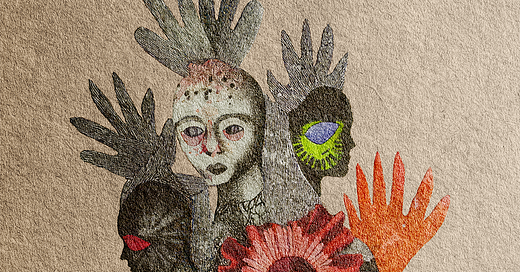The Day After the Storm
{Ecology of Madness and Mourning, Contaminated Body, Mythology, and the Feminine at the End of Worlds}
This collection begins with a fallen tree and a blind grandmother who embroidered without seeing, spreading a stained tablecloth on a table set with toxic substances, memories, and wounded myths. After all, the end of the world smells like clay and sour bread.
A mixture of critical essay, ritual lament, and mythical invocation, in a poetic and raw descent of a mutant goddess through the seven layers of contamination, where the middle-aged female body becomes an altar and a denunciation.
Here, flesh and bones are wounded territories, madness is the language of the Earth, and poisons are not metaphors. Pain is not an individual flaw, but a symptom of a polluted world. The body is an ecosystem; collapse is a crossing, and madness is a relational language. It is a pilgrimage of denunciation of the silent pacts of normality. It is not about well-being, but about disobeying with the body.
If you are looking for easy answers, this article is not for you. If you seek certainties, prepare yourself for a shock. For those who dare to listen to what rots, without rushing to bloom. If you bring wounds, sit down, the table is set.
Keep reading with a 7-day free trial
Subscribe to Cosmic-Chthonic Cartographies to keep reading this post and get 7 days of free access to the full post archives.




